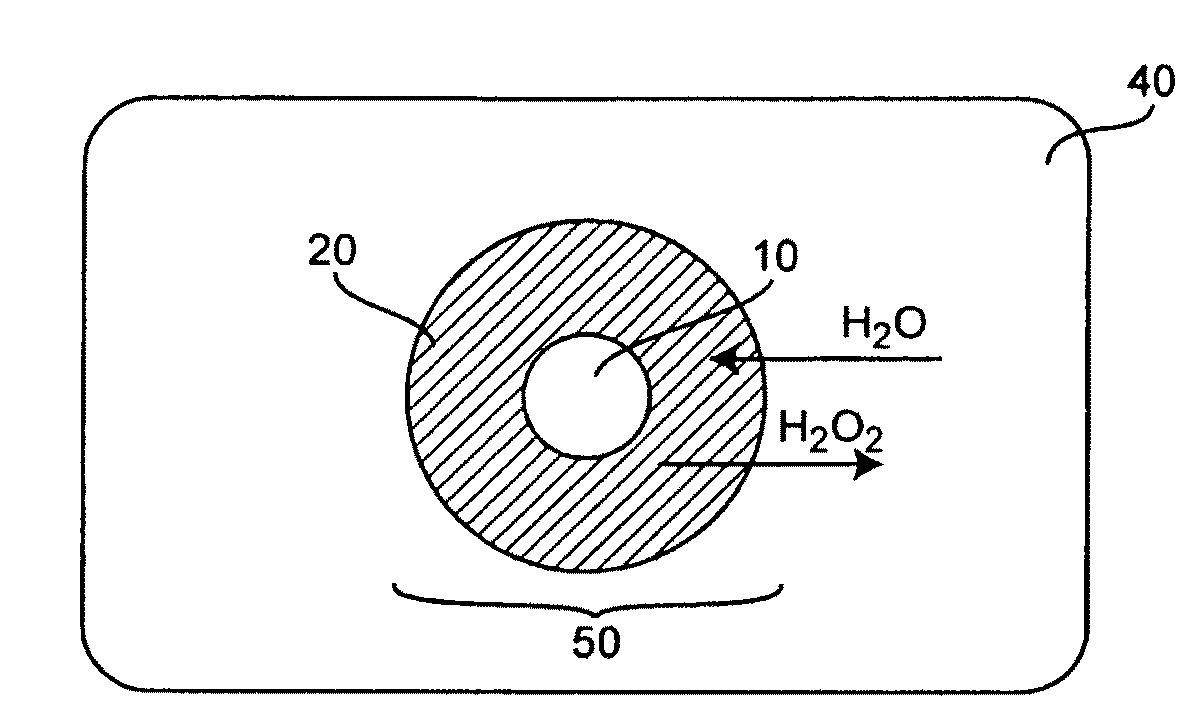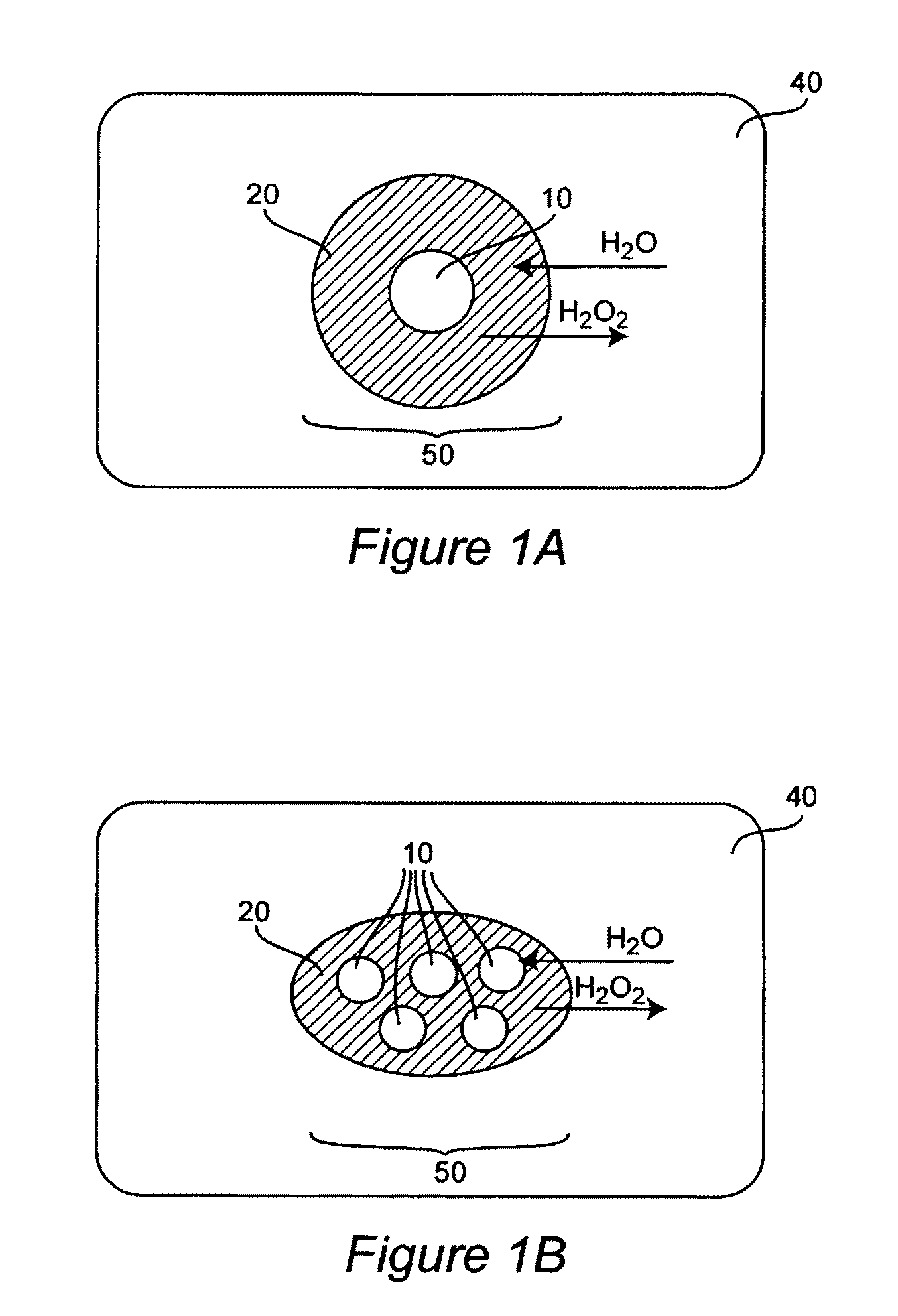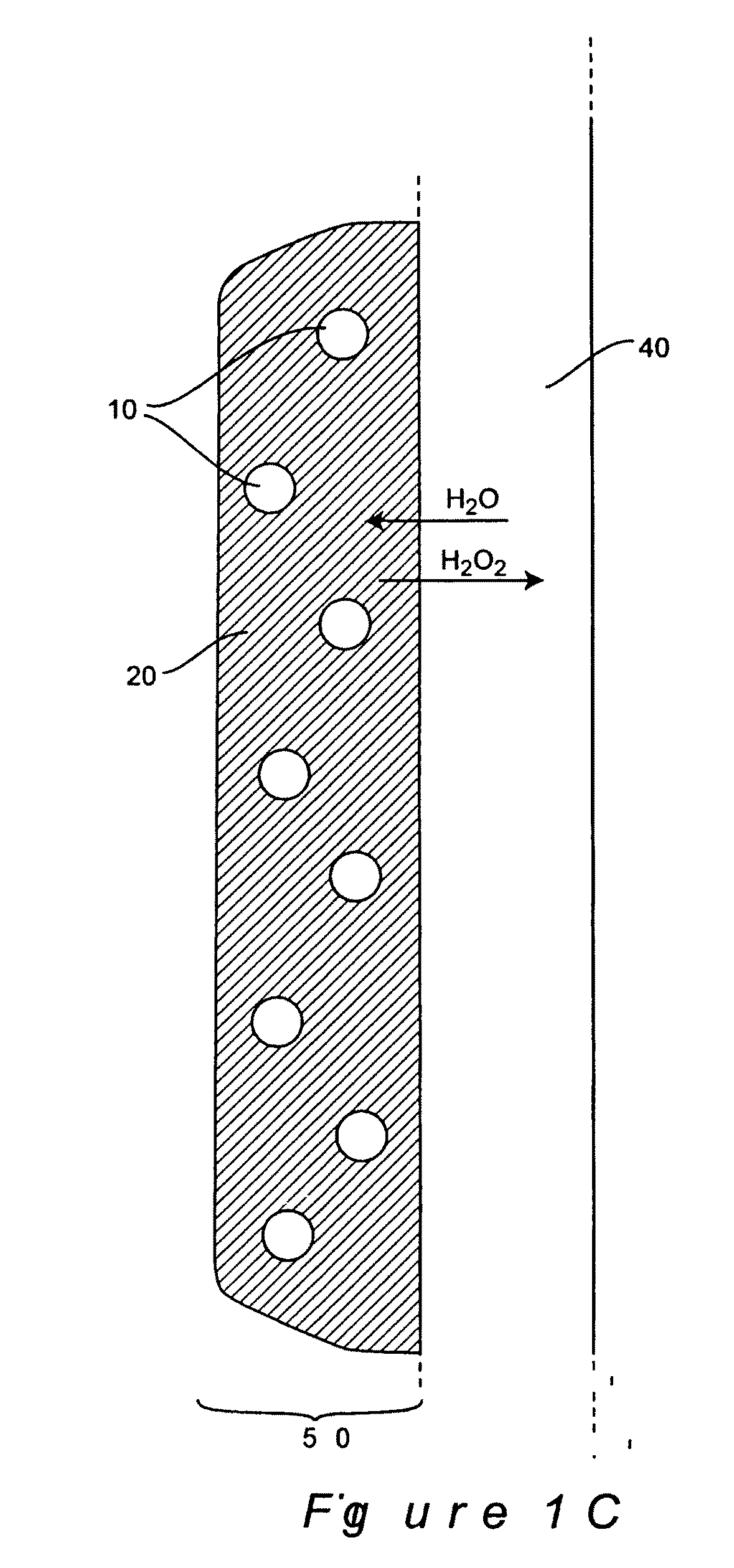Methods and Compositions for Controlled and Sustained Production and Delivery of Peroxides and/or Oxygen for Biological and Industrial Applications
a technology of peroxide and oxygen, applied in the direction of drug compositions, amide active ingredients, disinfection, etc., can solve the problems of mass oxygen debt or tissue ischemia, and the difficulty of restoring oxygen delivery above the critical threshold level to maintain survival, so as to reduce the chance of embolism and prevent oxidative damage
- Summary
- Abstract
- Description
- Claims
- Application Information
AI Technical Summary
Benefits of technology
Problems solved by technology
Method used
Image
Examples
example 1
Development of a Transport Model
[0071]To investigate rationally the impact of the myriad of variables and focus the experimental scope of this project, we developed a transport model for the delivery process. The model allows us to simulate the oxygen delivery rate for any combination of geometric and mass loading variables and thereby design and plan the construction of a hydrogen peroxide delivery system to produce the desired amounts of oxygen. The rates of diffusion of water into the microcapsules, the rate of generation of hydrogen peroxide from the reaction of water with urea hydrogen peroxide (UHP) particles, and the diffusion of hydrogen peroxide out the microcapsules were computed using the following equations. Shrinking core kinetics were assumed for the UHP-water reaction and the UHP particles were assumed to be spherical for ease of computation. Other values for the transport coefficients, reaction rate constants, microcapsule compositions, and different particle geometr...
example 2
Use of a Diffusion Cell to Measure the Generation of H2O2
[0087]A diffusion cell was constructed in order to measure the release rate of hydrogen peroxide from UHP and its diffusion across a selectively permeable membrane. A side view of the cell is provided in FIG. 4A and a top view is provided in FIG. 4B. UHP was dispersed in a PFC liquid and maintained in the bottom half of the cell. Rather than coat the particles, a flat PLGA membrane was used to separate the UHP from distilled water located in the top half of the cell. The PLGA membrane is permeable to water and hydrogen peroxide, but is a very effective barrier to permeation of the PFC. Thus, during the experiment, water diffused across the PLGA membrane and into the PFC / UHP slurry in the bottom half of the cell. Hydrogen peroxide was generated when the water contacted the UHP. The hydrogen peroxide then diffused through the PLGA membrane into the top half of the diffusion cell.
[0088]The amount of hydrogen peroxide in the top ...
example 3
Micorencapsulation of UHP for Intravascular Administration
[0091]The microcapsule contains tiny particles of urea hydrogen peroxide (UHP) suspended in a biocompatible, anhydrous carrier solvent, such as perfluorodecalin. The consistency of the suspension is that of a paste. Micron-sized droplets of this paste are created in a non-solvent for the perfluorodecalin and then encapsulated with a nanometer-thick shell of biodegradable poly(lactide-coglycolide) (PLGA) copolymer. This is illustrated in FIG. 6. Encapsulating a UHP / perfluorodecalin paste mitigates the initial release “burst” of hydrogen peroxide that is anticipated to occur if UHP alone is coated. After removal of the encapsulation solvent, dry microcapsules containing the UHP / perfluorodecalin paste are recovered. The dry microcapsules are resuspended in an inert, biocompatible fluid phase (the injection carrier) for storage and transport. The susceptibility of the microcapsules to water requires storage under anhydrous condit...
PUM
| Property | Measurement | Unit |
|---|---|---|
| Composition | aaaaa | aaaaa |
| Diameter | aaaaa | aaaaa |
| Transport properties | aaaaa | aaaaa |
Abstract
Description
Claims
Application Information
 Login to View More
Login to View More - R&D
- Intellectual Property
- Life Sciences
- Materials
- Tech Scout
- Unparalleled Data Quality
- Higher Quality Content
- 60% Fewer Hallucinations
Browse by: Latest US Patents, China's latest patents, Technical Efficacy Thesaurus, Application Domain, Technology Topic, Popular Technical Reports.
© 2025 PatSnap. All rights reserved.Legal|Privacy policy|Modern Slavery Act Transparency Statement|Sitemap|About US| Contact US: help@patsnap.com



